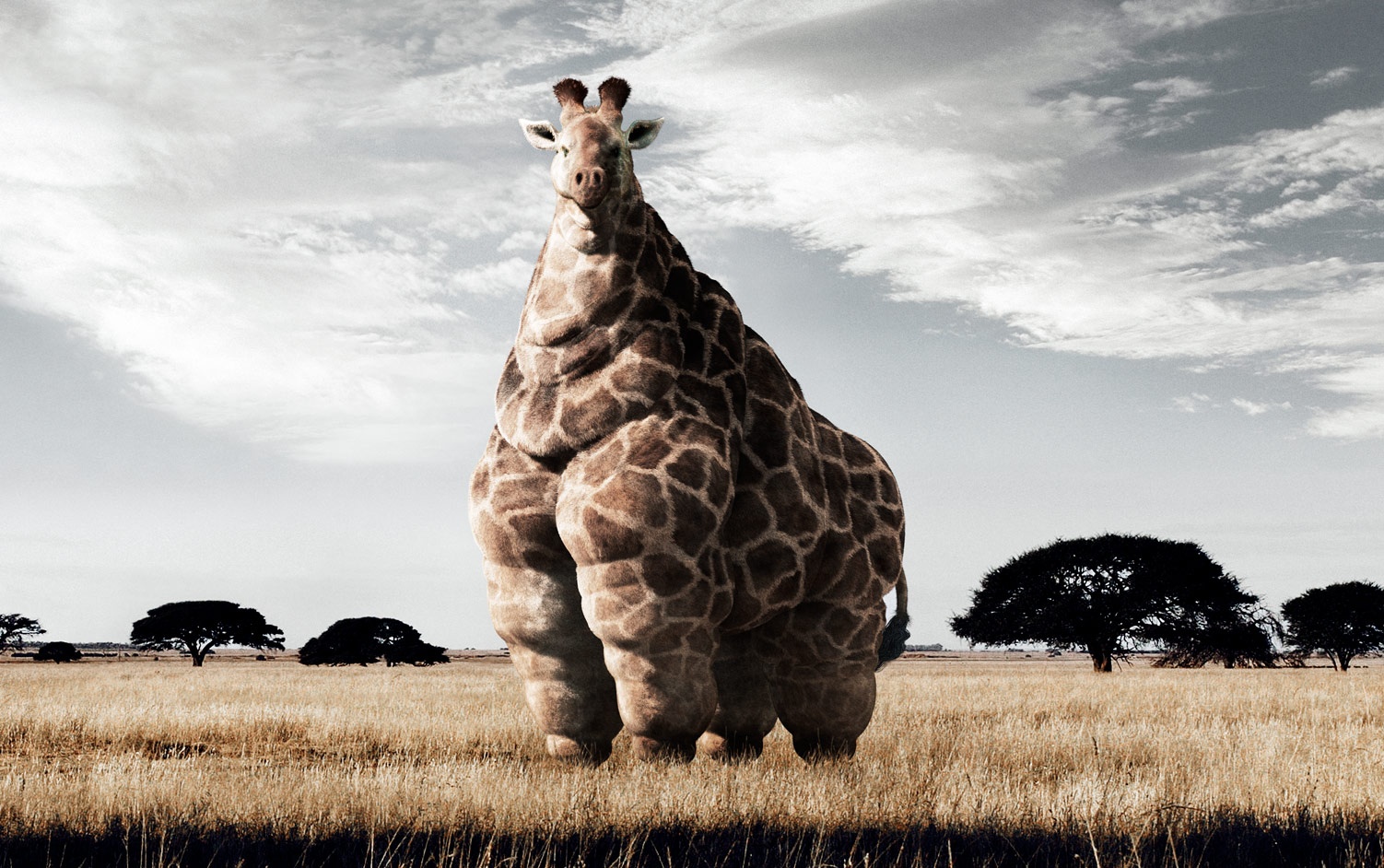When one thinks of awe-inspiring creatures, few can rival the majesty of the giraffe. With its elongated neck, towering stature, and unique patterns, the giraffe is a symbol of the African savanna. However, within this remarkable species, one individual has captured the world's attention as the record-holder for being the world's biggest giraffe. This extraordinary animal challenges our understanding of height and grace in the animal kingdom, leaving many to marvel at the sheer scale of its existence.
But what does it mean to be the world's biggest giraffe? Is it merely a matter of size, or does it encompass a broader understanding of the animal's life, habitat, and interactions with the world around it? This article will delve into the fascinating world of giraffes, focusing on the biggest among them and exploring the implications of their existence. From their dietary habits to their social structures, the life of the world's biggest giraffe is as complex as it is captivating.
As we embark on this journey, we will not only celebrate the remarkable achievements of this towering creature but also address the critical conservation issues facing giraffes in the wild. With their populations on the decline, understanding and appreciating the world's biggest giraffe can serve as a catalyst for broader conservation efforts, ensuring that these magnificent animals continue to roam the earth for generations to come.
What is the Height of the World's Biggest Giraffe?
The current record-holder for the world's biggest giraffe is named Forest. Standing at an astounding height of 18 feet 6 inches, Forest has become a famous attraction at the Australia Zoo in Queensland. His towering stature surpasses that of other giraffes, making him a living testament to the wonders of the natural world.
How Did Forest Achieve Such Great Height?
Forest’s remarkable growth can be attributed to a combination of genetics and optimal living conditions. Like humans, giraffes experience growth spurts during their developmental years. Forest was born in 2007 and has been under the care of expert zookeepers who have ensured that he receives a balanced diet rich in nutrients essential for growth. His diet mainly consists of:
- Leaves
- Bark
- Flowers
- Fruits
These food sources provide the necessary vitamins and minerals that contribute to his impressive height.
What Are the Living Conditions of the World's Biggest Giraffe?
Forest resides in a spacious habitat that mimics his natural environment. The Australia Zoo provides ample space for him to roam and explore, which is crucial for his physical and mental well-being. The environment includes:
- Lush vegetation
- Water sources
- Enrichment activities
These elements are essential for keeping Forest stimulated and healthy, allowing him to showcase his remarkable height in a safe environment.
What Are the Social Behaviors of Giraffes?
Giraffes are social animals that often engage in unique behaviors. They typically live in loose herds consisting of females, their young, and a few males. The social structure of giraffes allows for the development of intricate relationships and hierarchies. However, the world's biggest giraffe, Forest, has a distinct role within this structure.
How Does Forest Interact with Other Giraffes?
Forest’s towering height gives him a unique advantage in social interactions. He can easily survey his surroundings and spot potential threats, which is a crucial survival trait in the wild. His size also allows him to reach higher foliage, making him a valuable member of his herd when it comes to food sources. Despite his impressive stature, Forest is known for his gentle demeanor and often engages in friendly behaviors with his fellow giraffes.
What Can We Learn from the World's Biggest Giraffe?
Forest serves as a symbol of the beauty and diversity of the giraffe species. His existence highlights the importance of understanding and preserving these magnificent creatures. Learning from Forest's life can inspire conservation efforts aimed at protecting giraffes and their habitats. Some important lessons include:
- Understanding the significance of biodiversity
- Recognizing the impact of habitat loss
- Promoting sustainable practices to protect wildlife
What Are the Conservation Issues Facing Giraffes Today?
Despite the enchantment surrounding giraffes, their populations are declining due to various factors. Habitat loss, poaching, and climate change have all contributed to the threats faced by these majestic animals. The world's biggest giraffe, Forest, can serve as an ambassador for his species, raising awareness about the challenges they encounter.
How Can We Support Giraffe Conservation Efforts?
Supporting giraffe conservation can be achieved through various means. Individuals can contribute by:
- Donating to reputable wildlife conservation organizations
- Participating in educational programs about giraffes
- Advocating for policies that protect wildlife habitats
Every action counts, and by rallying together, we can help ensure the survival of giraffes, including the world's biggest giraffe, for future generations.
What Is the Future for Giraffes and Forest?
The future of giraffes, including Forest, hinges on collective efforts to preserve their habitats and raise awareness about their plight. As we continue to learn from the world's biggest giraffe, we must commit to protecting these incredible animals and the ecosystems they inhabit. Through education, advocacy, and conservation initiatives, we can help create a brighter future for all giraffes.
In conclusion, the world's biggest giraffe, Forest, stands as a remarkable symbol of nature's grandeur. His life and stature remind us of the need to appreciate and conserve the wildlife that shares our planet. By understanding the challenges facing giraffes and taking action to support their conservation, we can ensure that these magnificent creatures continue to inspire and captivate future generations.



